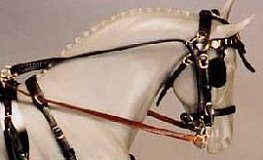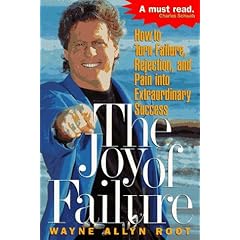Upon further reading it becomes even more apparent that Black Beauty was designed to be its own form of Bible. Now, before you begin to think in religious terms, consider the actual overall purpose of the Bible outside of any religious sense. It is in essence a collection of parables, short symbolic stories with moral lessons inbedded in their conclusions. With this in mind, my meaning should become clear, as each chapter of Sewell's novel serves as its own small symbolic moral cautioning, each with a clear lesson.
I know not how greatly Sewell was influenced by Aesop's Fables in the writing of the novel, but I find the overall theme of the two remarkably similar. In much the same way as the fables, Sewell uses animals and their interactions to tell v ery human stories, and express very human values, in a manner that entertains and teaches, rather than lectures, her readers. Her own profficiency with maintaining a sympathetic imagination is shown in using this style, in noticing the feelings of even the lowliest of London's servants with lines such as "It often went to my heart to see how the little ponies were used" (Sewell, 172). To take into account the feelings of other beings, the very basis of sympathetic imagination, goes largely against human nature, especially when those sympathies are extended to non-human targets. It is only in the excercise of our compassion that we extend such sympathies to beings outside ourselves, and yet in accomplishing such a task we develop a bond with these other beings, and a strength so prevalent in ourselves, that moral lessons are able to reach us much more effectively through the use of said bond. This then is why Aesop's Fables, and subsequently Black Beauty serve so delightfully to engage our hearts and minds with their simple moral lessons.
ery human stories, and express very human values, in a manner that entertains and teaches, rather than lectures, her readers. Her own profficiency with maintaining a sympathetic imagination is shown in using this style, in noticing the feelings of even the lowliest of London's servants with lines such as "It often went to my heart to see how the little ponies were used" (Sewell, 172). To take into account the feelings of other beings, the very basis of sympathetic imagination, goes largely against human nature, especially when those sympathies are extended to non-human targets. It is only in the excercise of our compassion that we extend such sympathies to beings outside ourselves, and yet in accomplishing such a task we develop a bond with these other beings, and a strength so prevalent in ourselves, that moral lessons are able to reach us much more effectively through the use of said bond. This then is why Aesop's Fables, and subsequently Black Beauty serve so delightfully to engage our hearts and minds with their simple moral lessons.
 ery human stories, and express very human values, in a manner that entertains and teaches, rather than lectures, her readers. Her own profficiency with maintaining a sympathetic imagination is shown in using this style, in noticing the feelings of even the lowliest of London's servants with lines such as "It often went to my heart to see how the little ponies were used" (Sewell, 172). To take into account the feelings of other beings, the very basis of sympathetic imagination, goes largely against human nature, especially when those sympathies are extended to non-human targets. It is only in the excercise of our compassion that we extend such sympathies to beings outside ourselves, and yet in accomplishing such a task we develop a bond with these other beings, and a strength so prevalent in ourselves, that moral lessons are able to reach us much more effectively through the use of said bond. This then is why Aesop's Fables, and subsequently Black Beauty serve so delightfully to engage our hearts and minds with their simple moral lessons.
ery human stories, and express very human values, in a manner that entertains and teaches, rather than lectures, her readers. Her own profficiency with maintaining a sympathetic imagination is shown in using this style, in noticing the feelings of even the lowliest of London's servants with lines such as "It often went to my heart to see how the little ponies were used" (Sewell, 172). To take into account the feelings of other beings, the very basis of sympathetic imagination, goes largely against human nature, especially when those sympathies are extended to non-human targets. It is only in the excercise of our compassion that we extend such sympathies to beings outside ourselves, and yet in accomplishing such a task we develop a bond with these other beings, and a strength so prevalent in ourselves, that moral lessons are able to reach us much more effectively through the use of said bond. This then is why Aesop's Fables, and subsequently Black Beauty serve so delightfully to engage our hearts and minds with their simple moral lessons.And lessons they are, as each chapter tends to end with statements such as "if we see cruelty or wrong that we have the power to stop, and do nothing, we make ourselves sharers in the guilt" (Sewell, 164) and "if a thing is right, it can be done, and if it is wrong, it can be done without; and a good man will find a way" (Sewell, 156). These lessons are not new concepts, in terms of the history of human literature. Far from it, each moral Sewell expresses is positively old hat, and they were all old hat long before she was born. No, what is new is the context of the telling, morals are easily forgotten unless they are retold in a setting with which the common man can identify, and in a way that reaches his heart.

Which is Sewell's goal, she takes to heart the heart of the matter, which is to reach the heart of her reader, and teach it. Since the time of Cupid's famous simple, people have known that as much as we think with our minds, we act with our hearts, and for some strange reason, with our strange belief that animals are somehow innocent where we are not, they reach our hearts more effectively than tales of humans, and with far greater impact. Like a better fletched arrow the woes of creatures reach deeper into us, and do more damage.
What Sewell does is hardly novel, but each generation needs a new set of moral parables with which to identify, and few work so well as a collection of animal symbols. Partly this may be the defenselessness of animals in the face of mankind's relentless existence. In the Victorian era it had become apparent that Man was powerful, but with that power came fear, fear of misuse, fear of disaster. That same fear continues to this day, as well as the misuse that inspires it, and so man endeavors to caution himself against his own inate nature, to terrify himself out of his relentless ways, and the use of innocent animals as martyrs is no less effective, as any of our classmates who saw

can attest. It is an old fear, and an old moral, one Sewell shows herself full-well aware of in quoting "inasmuch as ye have done it to one of the least of these" (Sewell, 181).







 Which is he, or if he is both, what story does he tell?
Which is he, or if he is both, what story does he tell?